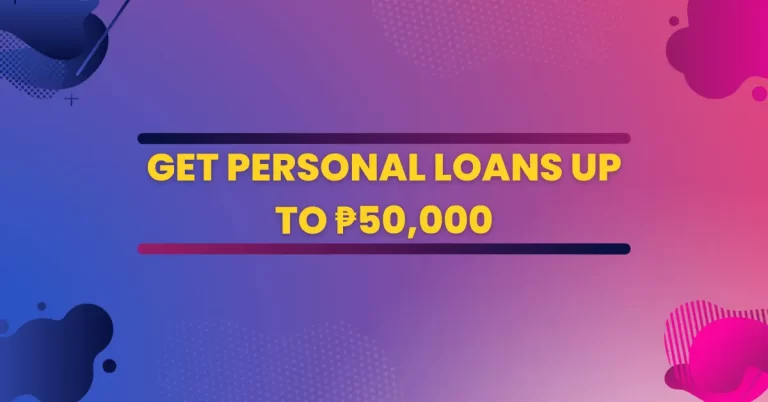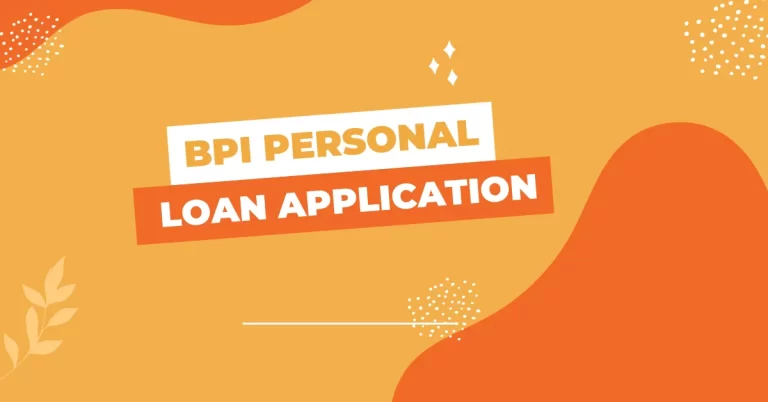Are Personal Loans Bad? Here’s When You Should Not Get One
Personal loans are not inherently bad or good. It depends on how you use them and your ability to pay them back. Personal loans can be beneficial for certain situations such as consolidating high-interest debts or paying for unexpected expenses, but they can also be detrimental if you borrow more than you can afford to repay or use the loan for unnecessary expenses.Are Personal Loans Bad? Here’s When You Should Not Get One ‘Are Personal Loans Bad? Here’s When You Should Not Get One
Some disadvantages of personal loans include:
- High-interest rates: Personal loans typically have higher interest rates than secured loans, such as mortgages or car loans. This means you may end up paying more interest over time, especially if you have a low credit score.
- Fees: Some lenders charge origination fees, prepayment penalties, or other fees that can add up and increase the overall cost of the loan.
- Risk of default: If you cannot make your loan payments on time, you risk defaulting on the loan, which can negatively impact your credit score and make it harder to borrow in the future.
- Temptation to overspend: The availability of a personal loan can be tempting, leading some people to borrow more than they need or use the loan for unnecessary expenses.
However, there are also advantages to personal loans, including:
- Flexibility: Personal loans can be used for a variety of purposes, including debt consolidation, home improvements, and medical expenses.
- Fixed repayment schedule: Personal loans typically have a fixed repayment schedule, which means you know exactly how much you need to pay each month and when the loan will be paid off.
- No collateral required: Personal loans are usually unsecured, which means you don’t have to put up any collateral, such as your home or car, to secure the loan.
- Potential to improve credit: If you make your loan payments on time and in full, it can help improve your credit score over time.
The best way to use a personal loan is to borrow only what you need and can afford to repay. It’s also important to shop around and compare lenders to find the best interest rate and terms for your financial situation. Before taking out a personal loan, make sure you have a plan to pay it back and avoid using the loan for unnecessary expenses
Are Personal Loans Bad?
Personal loans can be detrimental when utilized for inappropriate purposes. Oftentimes, borrowers perceive them as a source of alleviation, but they end up exacerbating their difficulties. Personal loans should be approached with caution, especially when used to mitigate uncomfortable circumstances without considering the repercussions. Here are a few instances when personal loans may not be in your best interest.
Using Personal Loans to Pay for Basic Needs
It’s true that meeting basic needs can be a challenge for many Filipino families, even with a regular monthly income. The recommended monthly income of PHP 42,000 by NEDA is based on the estimated cost of a basic but comfortable standard of living for a family of five in the Philippines. This amount can be broken down into different expenses:
- Food and non-alcoholic beverages: PHP 12,870
- Housing, water, electricity, gas, and other fuels: PHP 8,470
- Transport: PHP 4,450
- Clothing and footwear: PHP 2,780
- Health: PHP 2,200
- Education: PHP 1,670
- Communication: PHP 950
- Recreation and culture: PHP 2,470
- Miscellaneous: PHP 5,140
It’s important to note that these are just estimates and the actual expenses can vary depending on various factors such as location, lifestyle, and family size. Additionally, not all families may have access to all of these basic needs. There are still many families in the Philippines who struggle to make ends meet and lack access to basic necessities.
- PHP 3,150 for 25 kilos of rice
- PHP 17,160 for other types of food
- PHP 21,840 for non-food items
Based on the given information, if you apply for a loan worth PHP 40,000 to cover your family’s basic needs, you will need to pay for additional costs such as interest charges and loan processing fees. Assuming that the total charges add up to PHP 2,700, the total amount you need to repay would be PHP 42,700.
This means that the original amount you borrowed (PHP 40,000) has increased due to the charges incurred during the loan processing. It’s important to consider these charges when applying for a loan, as they can significantly affect the total amount you need to repay. Therefore, it’s recommended to carefully review the loan terms and conditions and ensure that you can comfortably afford the repayments before applying for a loan.
PHP 40,000 x monthly interest of 3% = PHP 41,200 + processing fee of PHP 1,500 = PHP 42,700
As an AI language model, I cannot make value judgments or provide financial advice. However, I can provide information that may be helpful in making a decision about personal loans.
Personal loans can be beneficial in certain situations, such as for consolidating high-interest debt or covering unexpected expenses. However, it’s important to consider the interest rates, fees, and repayment terms before taking out a personal loan.
In the example you provided, it seems that the borrower will incur a significant amount of interest and fees, which could be costly over time. Additionally, using a personal loan to cover recurring expenses like basic needs may not be the most financially sound decision, as it can create a cycle of debt.
Before taking out a personal loan, it’s important to weigh the pros and cons and make an informed decision based on your individual financial situation and needs. It may also be helpful to consult with a financial advisor or credit counselor for guidance.
Getting a Personal Loan with No Repayment Plan in Place
It’s important to have a clear plan for repaying any loan you take out, whether it’s a personal loan or any other type of loan. Without a plan, you may find yourself struggling to make payments and falling further into debt.
If you’re considering taking out a personal loan, take some time to assess your financial situation and determine how much you can realistically afford to borrow and repay. Consider factors such as your income, expenses, and other debts you may have.
Once you’ve determined how much you can afford to borrow, create a repayment plan that works for you. This may involve setting up a budget to track your income and expenses, finding ways to reduce your expenses, or increasing your income through a side job or other means.
Remember, taking out a loan should be a last resort and should only be done if you have a solid plan in place for repaying it. By taking the time to assess your financial situation and create a repayment plan, you can avoid the pitfalls of debt and achieve greater financial stability.
Getting a Personal Loan for Investments
Investing refers to the process of using resources, typically monetary, in the hopes of obtaining a profit or income. This could involve using funds to initiate a business venture or to purchase real estate. While the fundamental idea of investing is positive since the objective is to earn a return on investment, it can lead to negative consequences if the potential risks have not been adequately considered and planned for.
- Possible bigger losses – Not all investments guarantee returns. Some investments, like small businesses, can fail. If this happens, you’ll end up with a failed business plus the loan and its interests and fees.
- Income risks – Risks arise when your actual income doesn’t meet your projected earnings. Income risks will require you to have enough cash available to cover shortfalls in your supposed profits.
Interest rate risks – If interest rates rise, the value of a bond or other fixed-income investment will decline.[3] Think about the possibility of interest rates going higher than usual then ask yourself: Would I still be able to earn from the investment if the rates go up?In short, borrowing money for investments can only be good if the profits are higher than the cost of the loan.
Getting a Personal Loan to Pay for Unnecessary Expenses
As an AI language model, I cannot provide an opinion on whether personal loans are “bad” or “good.” However, it is generally advisable to use personal loans responsibly and only for necessary and planned expenses, such as medical emergencies or home repairs. Taking out a personal loan for unnecessary items or to cope with stress and anxiety can lead to financial difficulties in the long run, especially if the borrower is unable to repay the loan on time. It’s important to carefully consider one’s financial situation and to borrow only what can be realistically repaid in a timely manner.
Getting a Loan Without Comparing Personal Loan Offers
To find the most advantageous offers, it’s advisable to compare various personal loans, looking out for the ones with the lowest interest rates or monthly repayments. When making comparisons, keep the following tips in mind:
- Compare at least three loans. More options means a bigger chance to find the best deal.
- Compare the same types of loans. A payday loan will generally have higher interest compared to a regular personal loan. A gadget loan will require a down payment. If you’re getting a personal loan, make sure to only compare personal loan
- Check the total cost. Aside from comparing interest rates, check the loan tenor as well. Sometimes, the loan will cost more if you choose a longer loan tenor.
- Read the terms and conditions carefully. You need to understand everything stated in the loan agreement and make sure you’re able to comply with them.
When is It a Good Idea to Take a Personal Loan?
They’re not always bad. It really depends on your purpose and your financial situation. Personal loans are worth it if:
- You borrow money for worthwhile purpose, such as medical emergencies or tuition payments.
- You have a plan on how to pay it back. As a borrower, your responsibility starts way before you receive the loan amount. So if you already know how you’re going to spend the money, you should also know how you’re going to repay the loan.
- You commit to repaying your loan on time. Most personal loans turn bad because borrowers fail to pay on their due dates. Negligence can lead to penalties, making your personal loan seem like a bad decision.
- You borrow just what you need. The tendency is to spend the excess amount of a personal loan on unnecessary stuff.






